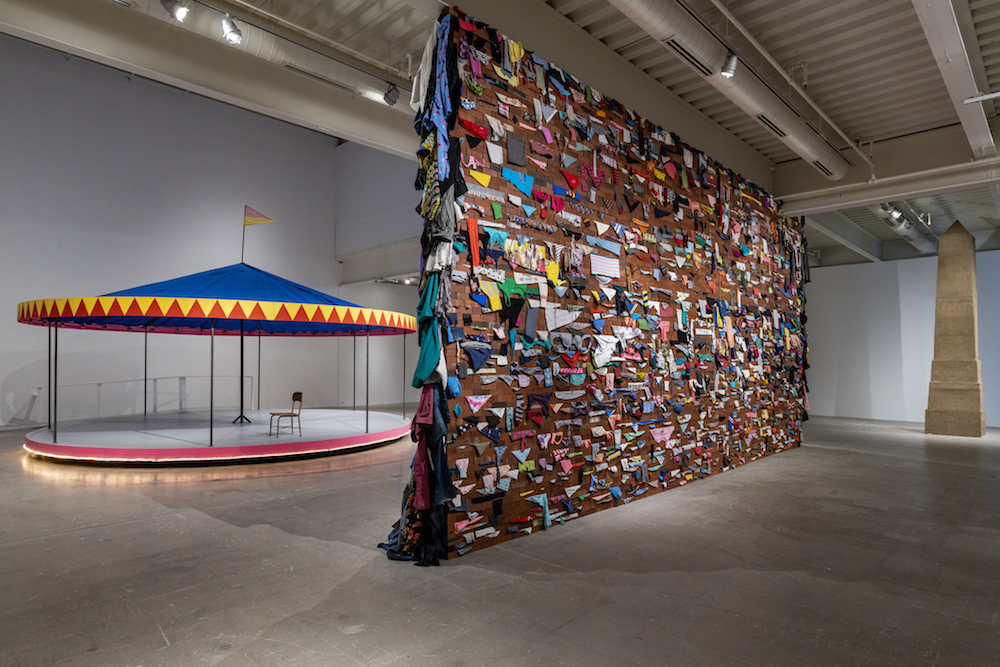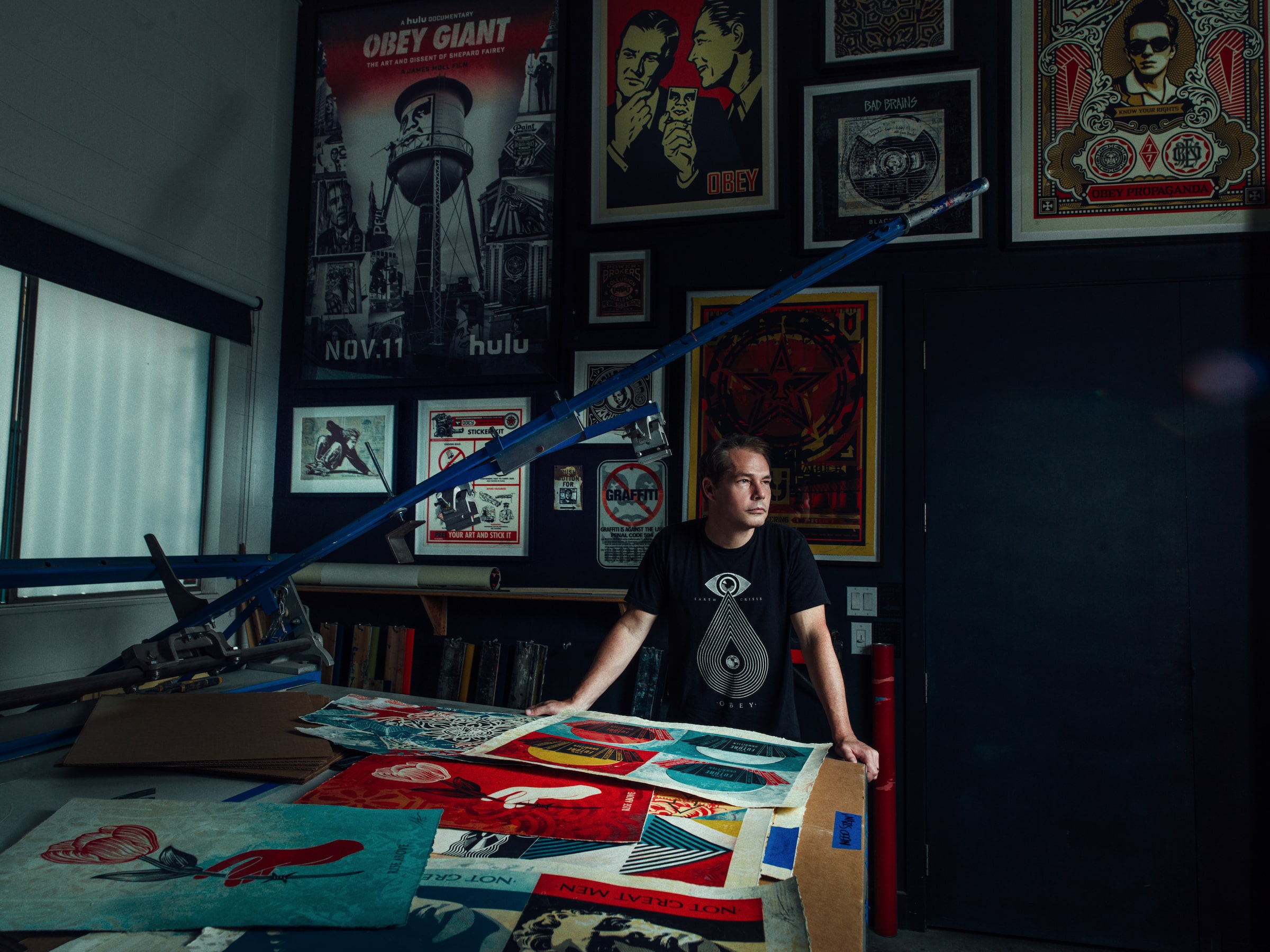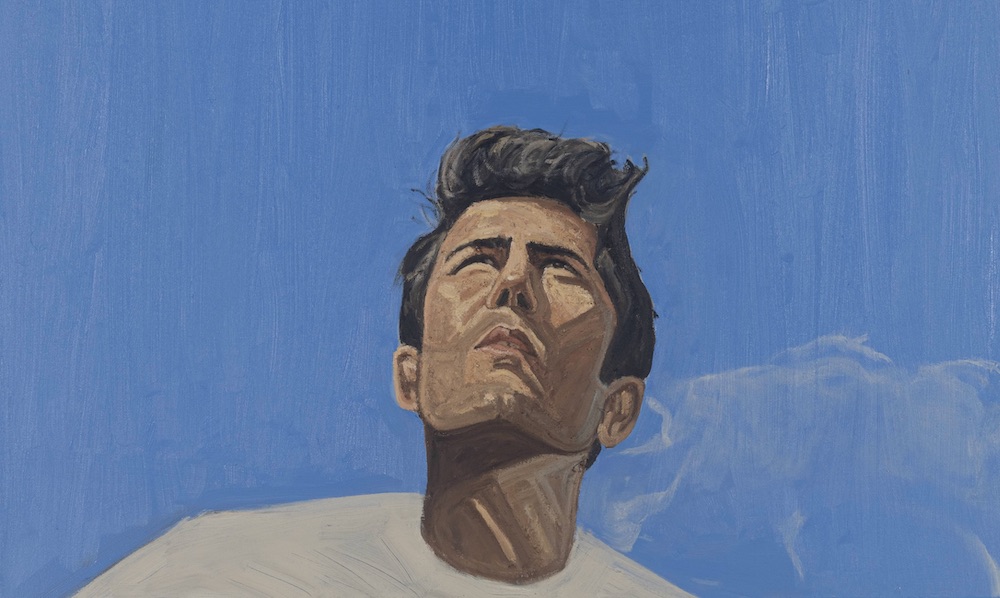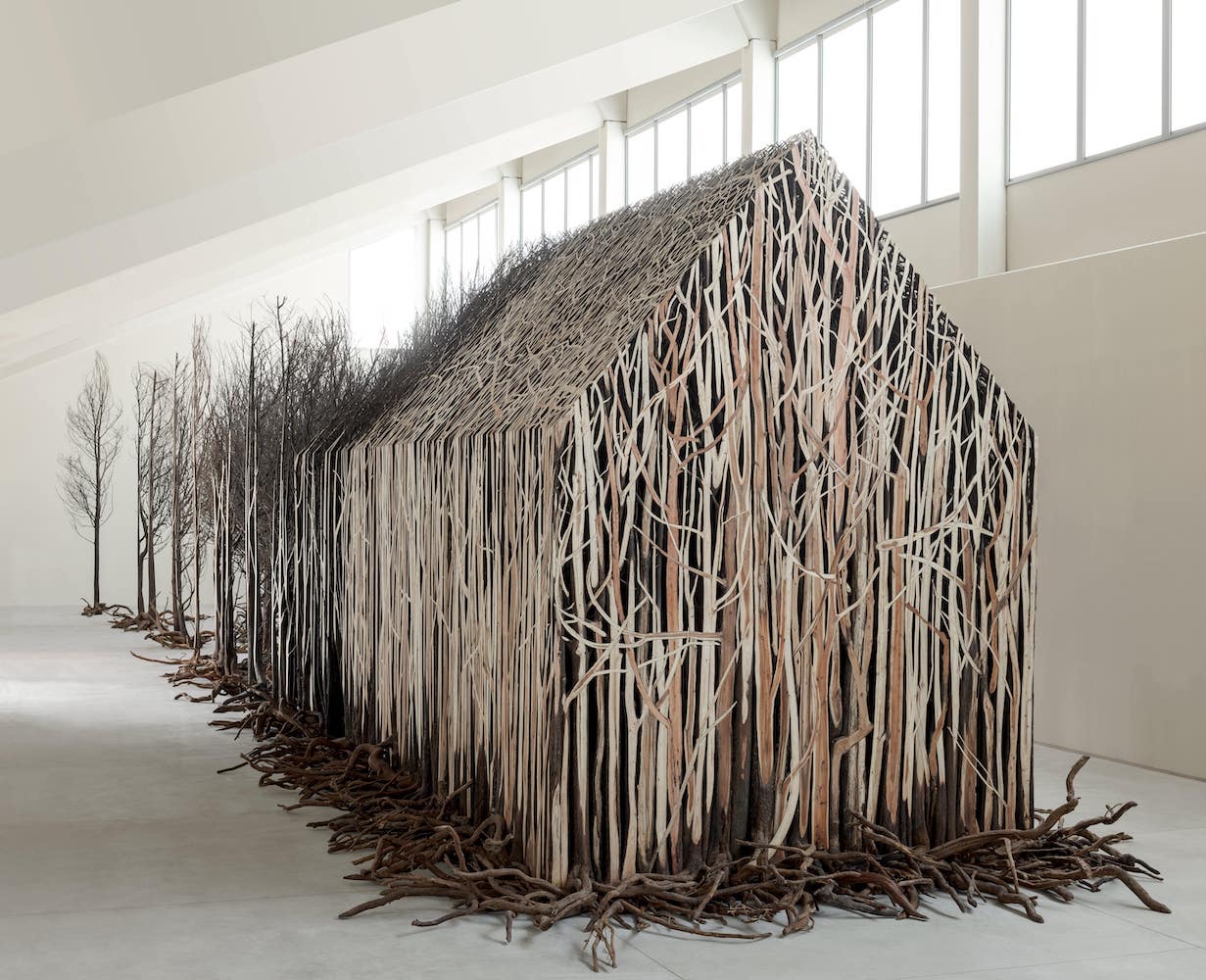Upon entering Karyn Olivier’s “Everything That’s Alive Moves,” which opened at the Institute of Contemporary Art (ICA), University of Pennsylvania in January before closing early due to the COVID-19 pandemic, visitors were asked to pin a white carnation to their clothing. The gesture references the tradition of wearing a carnation on Mother’s Day at many Black churches, as well as the tragic, devastating, and deadly MOVE bombing in 1985, which took place the day after Mother’s Day in Philadelphia.
After visitors don the carnation and read the wall text, Olivier confronts them with Fortified, a massive wall, built by hand, brick by brick, with secondhand clothing used as the mortar. With just a sliver or sleeve visible on the facade as one makes one’s way around the wall that extends all the way to the ceiling, a cascade of colorful clothing is visible from the backside—both beautiful and haunting, the bodies that once filled the clothing now imagined crushed by the weight of it all.
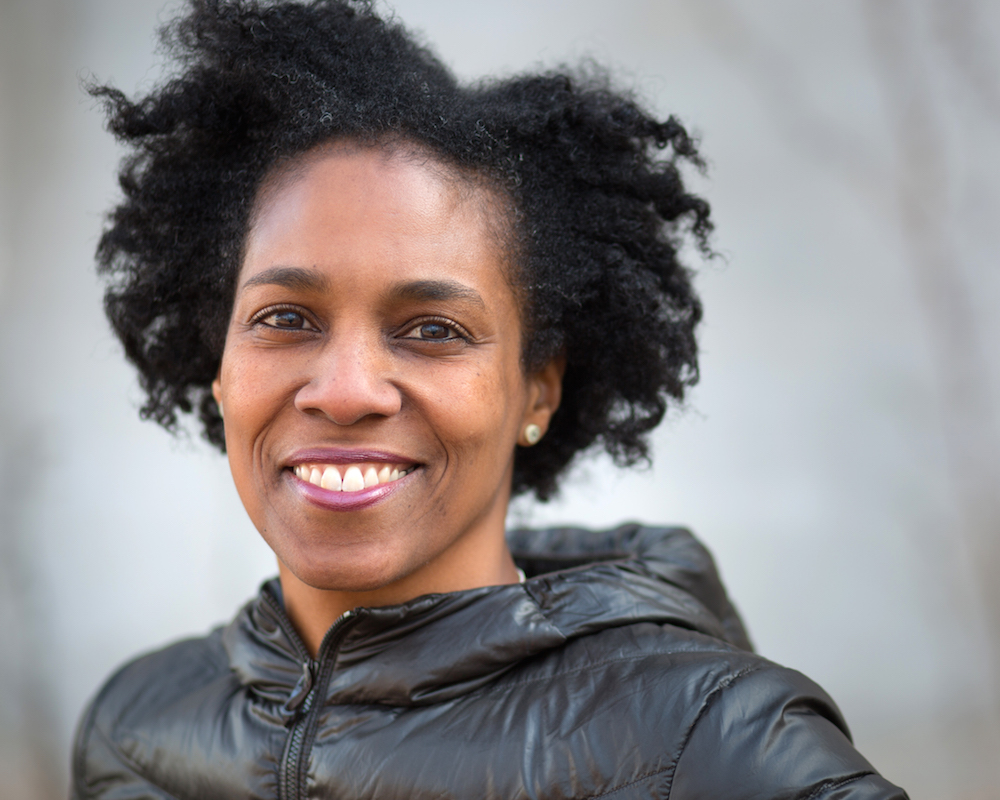
Portrait by Steve Weinik.
On view were several more monumental pieces—a slowly spinning merry-go-round with just one chair, no horses, and no delightful carnival music; a car cover full and spilling out with well-worn shoes; and an obelisk made from Amazon boxes covered in the sand and mud of Rome. All are experienced with the sound of church bells—which Olivier, a Rome Prize recipient, recorded in Italy—sounding off every 20 minutes or so.
The Philadelphia-based artist spoke with us about questions around monuments constantly becoming, our relationship to sculpture, and shifting histories.

“Karyn Olivier: Everything That’s Alive Moves” (2020) at Institute of Contemporary Art, University of Pennsylvania, courtesy of the artist.
WHITEWALL: Where did this show begin for you?
KARYN OLIVIER: I knew I wanted to do sculptures and monuments. A couple of the works are older, so I was thinking about how I could restage them but still think of them through civic engagements.
I knew I wanted to have this wall piece [Fortified]. After Trump came to office, I wanted to make this wall where the mortar was used clothing. The wall is a border, it seems impenetrable, it could be a shelter, but also who has access, who doesn’t? This wall can feel it’s monumental, but it can be taken down brick by brick. What does it mean to be tethered by clothing? I was also thinking about the Wailing Wall.
It’s a very different experience, the front and a back. In the back is where my heart sinks. You feel the weight of these bodies—the clothing is really a surrogate for the body. In a way, when you think of the issues, it’s almost more than you can imagine.

Karyn Olivier, “The Battle Is Joined,” 2017, mirrored acrylic, plywood, studs, courtesy of the artist.
WW: What about the merry-go-round, It’s Not Over ’Til It’s Over?
KO: I did it at Socrates Sculpture Park in New York. We all know a merry-go-round, but what happens when you don’t have all the horses, the lighting is very minimal, there is only one chair? I was thinking, how do I take something that we know and kind of strip it?
Amusement parks bombard our senses—you lose yourself. What would happen in your solitude? Aloneness could allow a certain presentness where you kind of lose yourself, too.
Within the concept of the show, I was thinking about how all these works are monuments, in a way. When I think of monuments, I think about memory, honoring. They’re about absence.
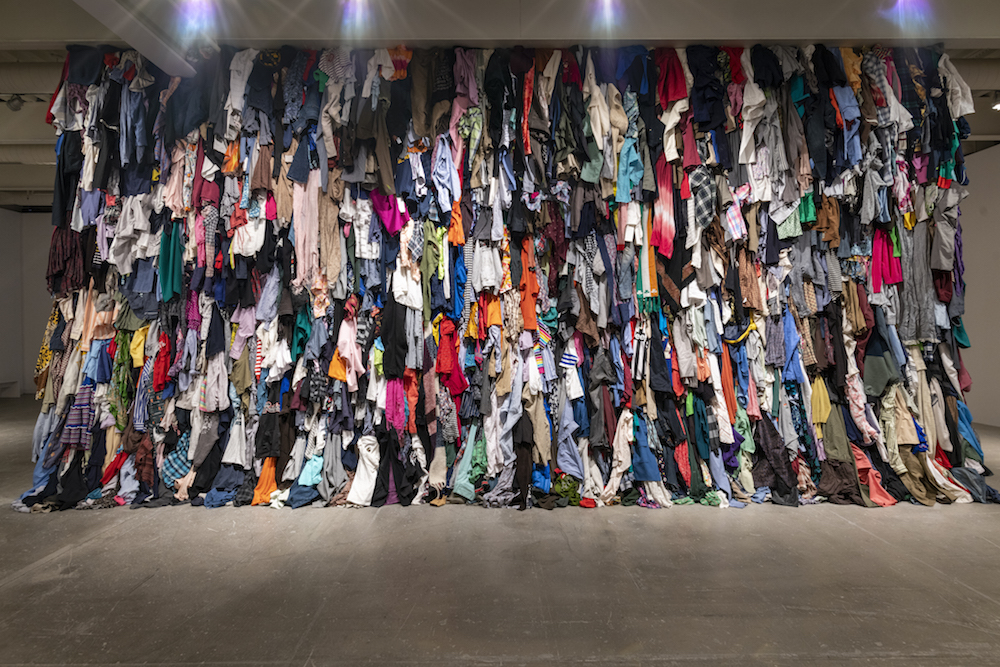
Installation view of “Karyn Olivier: Everything That’s Alive Moves” (2020) at Institute of Contemporary Art, University of Pennsylvania, photo by Constance Mensh.
WW: The obelisk you created, Moving the Obelisk, is a reference to a more historical monument. How was that made?
KO: I did that piece when I went to Rome. I had a whole different project I was going to do. But then I got obsessed with all these obelisks. I was researching and found that there are more obelisks in Rome than anywhere else in the world—even Egypt. These obelisks were taken from Egypt sometimes, as trophies of war, also a gift, but it was also imperialistic power. So I decided to start making a mockup with these cardboard boxes, and then what would it mean for me to use the dirt from Rome as opposed to marble or granite?
I thought I was going to just make a mockup and make a real piece here, but then I realized, that’s the monument, my monument, so to use shipping boxes and cover it with dirt and mud to make an obelisk.
It’s totally ephemeral—there are literally a couple pieces of wood inside. In its absurdity, it speaks of the absurdity of what it would mean to make these 60-foot-tall 30-ton obelisks. And what does it mean for me to make my own monument when we are at a time in this country thinking about monuments?
WW: You’ve done a number of public works, and have a few in the process at the moment. You’ve been commissioned to create a new memorial at Stenton Park to Dinah. She was a once-enslaved woman credited for saving the historic landmark Stenton House during the Revolutionary War. How did you want to address and honor her story?
KO: A plaque was made in 1912, and it was one of the first commemorations of a Black woman. Of course, we realize now it was only speaking through the lenses of her saving the house.
When I found out I was a finalist, I was having such a hard time because I exhausted all the research very quickly. I was thinking, “What am I going to make that can represent a person whose last name we don’t even know?”
So I just started writing questions, and the questions are the piece instead of making it a monument. I’m making this circular seating area with two slabs, and it’s going to have a black silhouette portrait of her inlaid. I have a list of questions on one for her, like “May I ask you Dinah?” “What was your full name?” “Where were you born?” “How did you arrive here?” “What was your greatest joy?” “How did freedom feel?” “Did you ever have moments where you wished you let it burn?” “How would you like to be remembered?”
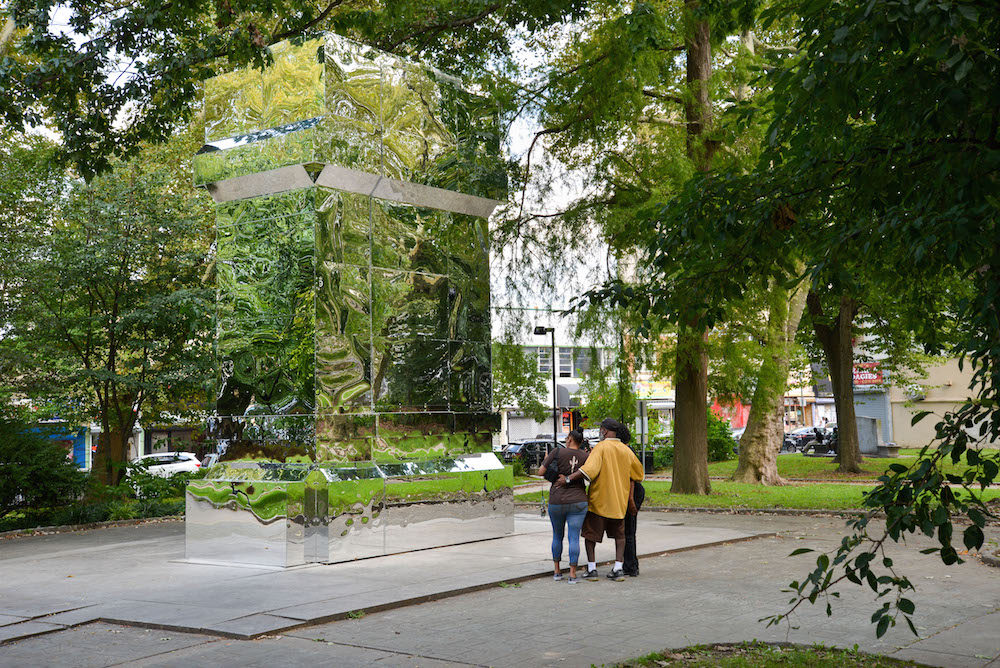
“The Battle is Joined”, a sculpture by 2019 Pew Fellow Karyn Oliver, installed in Vernon Park, Philadelphia, 2017, the work was presented as part of Mural Arts Philadelphia’s “Monument Lab”, photo by Mike Reali.
And the other side the questions are just shifted to the viewer: “What is your name?” “Do you feel free?” “How would you want to be remembered?” Even if it’s just an internal dialogue, keeping her alive, keeping her in the present, having her now in the present and in the future.
On the back of it, I decided to reinstall the original plaque, but then adding a plaque with updated quotes on the other side. One is from Alice Walker, “Healing begins where the wound was made,” and from Lorraine Hansberry, “Never be afraid to sit a while and think.”



